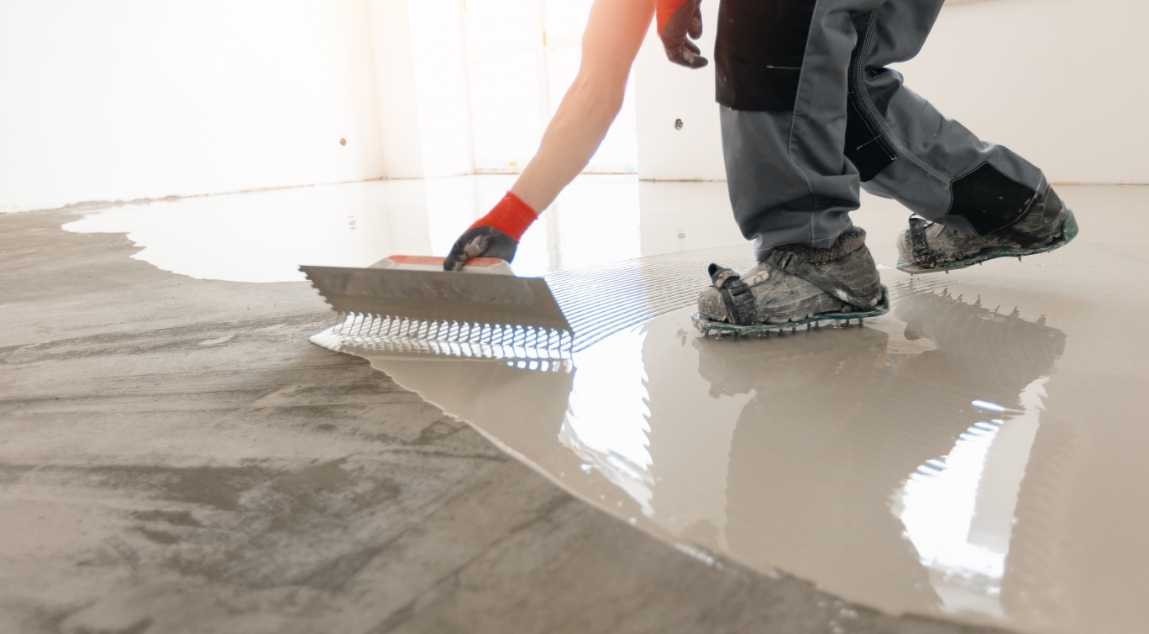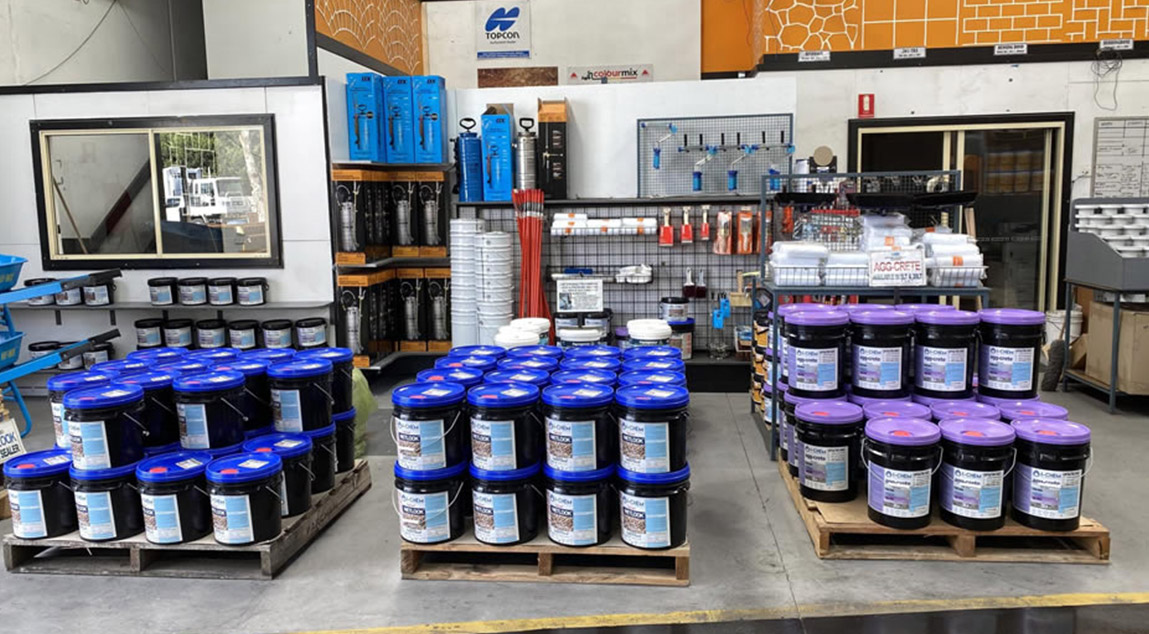Maintenance Tips for Exposed Aggregate Concrete

Exposed aggregate concrete is a form of concrete that has gained quite a bit of traction in modern design and landscaping. This unique style is achieved by removing the top layer of cement paste, revealing the underlying aggregate, typically composed of pebbles, crushed stone, or even seashells.
The exposed aggregate gives the concrete a highly textured and somewhat rugged finish that is as appealing to the eye as it is functional underfoot. This textured finish is visually striking and provides an excellent slip-resistant surface, making it a popular choice for driveways, walkways, patios, pool decks, and other outdoor areas.
In the next sections, we’ll delve deeper into the maintenance requirements of exposed aggregate, including sealing, cleaning, and stain removal. These tips will help you protect your investment and ensure that your exposed aggregate areas remain attractive and functional for many years to come.
Sealing: Prevention is Better Than Cure
Sealing is one of the most crucial yet overlooked aspects of maintaining exposed aggregate concrete. A high-quality concrete sealer forms a durable barrier on the surface, preventing stains from penetrating into the concrete and ensuring that the vibrant colours of the aggregate remain untarnished and the surface’s aesthetic appeal is preserved.
Sealer application enhances the inherent qualities of exposed aggregate concrete. By boosting the colour of the embedded stones and pebbles, the sealer adds a glossy finish that heightens the visual appeal of the surface. This glossy finish, however, does more than just beautify the surface – it also serves as an added layer of protection against the elements, repelling water, oil, grease, and other potential staining agents.
When choosing a sealer, selecting a product specifically designed for exposed aggregate concrete is essential. These sealers are formulated to penetrate the uneven surface and bond securely with the aggregate and cement, providing optimal protection. Be mindful of the differences between water-based and solvent-based sealers. While both types offer protection, they differ in their application procedures, drying times, and the finish they provide. To fully explore the differences between water-based and solvent-based sealers, read our comprehensive guide here.
How to Clean Exposed Aggregate Concrete
When it comes to maintaining the pristine appearance of exposed aggregate concrete, regular cleaning is a necessity. While visually appealing, the unique, textured surface of this concrete can become a trap for dirt and debris. If left unchecked, these minute particles can compromise the concrete’s aesthetic quality and, over time, its structural integrity.
Our favourite way to clean exposed aggregate concrete is with a pressure washer. This high-powered cleaning tool is effective in dislodging stubborn dirt and debris from the concrete’s textured surface. However, using a pressure washer requires precision and care. Too much pressure can cause damage to the concrete, while too little will leave the dirt untouched. It’s important to use a less aggressive pressure while cleaning exposed aggregate, as water pressure that is too strong may dislodge some of the small stones.
Beyond the trusty pressure washer, your cleaning arsenal has another secret weapon: an acidic cleaner designed specifically for concrete. Acidic cleaners are crucial for deep cleaning exposed aggregate concrete as they are specifically designed to break down dirt and stains without damaging your concrete.
Using these cleaners is fairly straightforward. First, apply the cleaner on the concrete surface, ensuring that it’s evenly distributed. Then, using a stiff-bristled brush, scrub the surface to work the cleaner into the concrete and lift any ingrained dirt. After scrubbing, a thorough rinse is needed to wash away the dislodged dirt and any residual cleaner. Remember, leaving the cleaner on can lead to discolouration, so it’s vital to rinse it off completely.
Routine cleaning isn’t just about maintaining the aesthetic appeal of your concrete. It also provides the perfect opportunity to inspect the surface for any signs of wear or damage. Early detection of potential issues allows for timely intervention, saving you from costly repairs down the line.
Removing Common Stains
With its unique charm and durability, exposed aggregate concrete is among the top picks for homeowners and architects. However, like a blank canvas, it is prone to unsightly stains that can mar its beauty. These stains can come from various sources, including oil, grease, rust, and organic materials like leaves or berries. Each type of stain presents its own set of challenges and requires a specific approach to treatment.
Oil and Grease Stains
Oil and grease stains may seem like a homeowner’s worst nightmare, but they can be managed with the right approach. The initial step in dealing with such stains is absorbing as much of the oil or grease as possible using cat litter or cornstarch. Apply a layer over the stain and let it sit for several hours or overnight to absorb the oil. Once that’s done, sweep it away.
The next step is to use a commercial degreaser. These products are engineered to break down oil and grease molecules, making it easier to remove the stain. The usage instructions may vary between products, so it’s important to follow the manufacturer’s guidelines. Usually, it involves applying the degreaser, letting it sit for a specified period, and then scrubbing the stained area with a stiff brush. A thorough rinse should then remove the residues, leaving your concrete spot-free.
Rust Stains
Rust stains on your exposed aggregate concrete can be a real eyesore. These stains typically occur when metal objects, such as garden tools, patio furniture, or even children’s toys, are left on the concrete for a prolonged period.
The metal reacts with moisture in the environment, leading to the formation of rust which can then be transferred onto your concrete. These stains can be particularly stubborn and may require a specialised cleaner. Rust stain removers often include oxalic or hydrochloric acid, which can dissolve the rust effectively.
Organic Stains
Organic stains are usually the result of fallen leaves, berries, or other plant materials.
These materials’ natural dyes and pigments can seep into the concrete, staining it. Organic stain removers often contain enzymes or other biological agents that can break down the organic matter.
Important Information to Note
Before applying any cleaner, it’s essential to do a spot test. Choose a small, inconspicuous area of your concrete and apply a small amount of the cleaner. Leave it for the recommended time, then rinse. Check the spot carefully – if there’s no discolouration or damage, it should be safe to use the cleaner on larger stains.
While cleaners are effective, prevention is always the best solution. To prevent rust stains, make sure to promptly remove any metal objects left on your concrete, especially if rain is forecast. Regular sweeping or blowing can help remove leaves and other plant materials before they can stain.
While dealing with stains can seem daunting, remember that the beauty and durability of exposed aggregate concrete make it worth the effort. With regular maintenance and prompt attention to stains, your concrete can remain a beautiful feature of your home for many years to come.
Trusted Exposed Aggregate Supplies in Melbourne
Maintaining exposed aggregate concrete involves a blend of routine cleaning, regular sealing, prompt stain removal and vigilant inspections. Adhering to these practices will not only prolong the lifespan of your concrete but also ensure it continues to add a touch of elegance to your home.
If you’re interested in laying your own exposed aggregate concrete or need supplies to clean existing concrete, Australian Slate Crete Supplies has everything you need to get the job done.
For advice on your next project, call 03 9408 7722 and chat with our friendly and knowledgeable staff.
-
 February 4, 2022Sandstone Concrete Stencil
February 4, 2022Sandstone Concrete StencilDo you want to add a touch of luxury and elegance to your concrete projects? If so, then consider using sandstone concrete stencils!
Read More -
 February 4, 2022Gloss Brick Sealer
February 4, 2022Gloss Brick SealerGloss brick sealer is a wonderful material for adding a brilliant shine to your brick slip wall feature.
Read More -
 February 4, 2022Bluestone Concrete Sealer
February 4, 2022Bluestone Concrete SealerIn a broad sense, the term “bluestone” is sometimes used to refer to a variety of stones. It’s a marketing term rather than a geological one.
Read More
